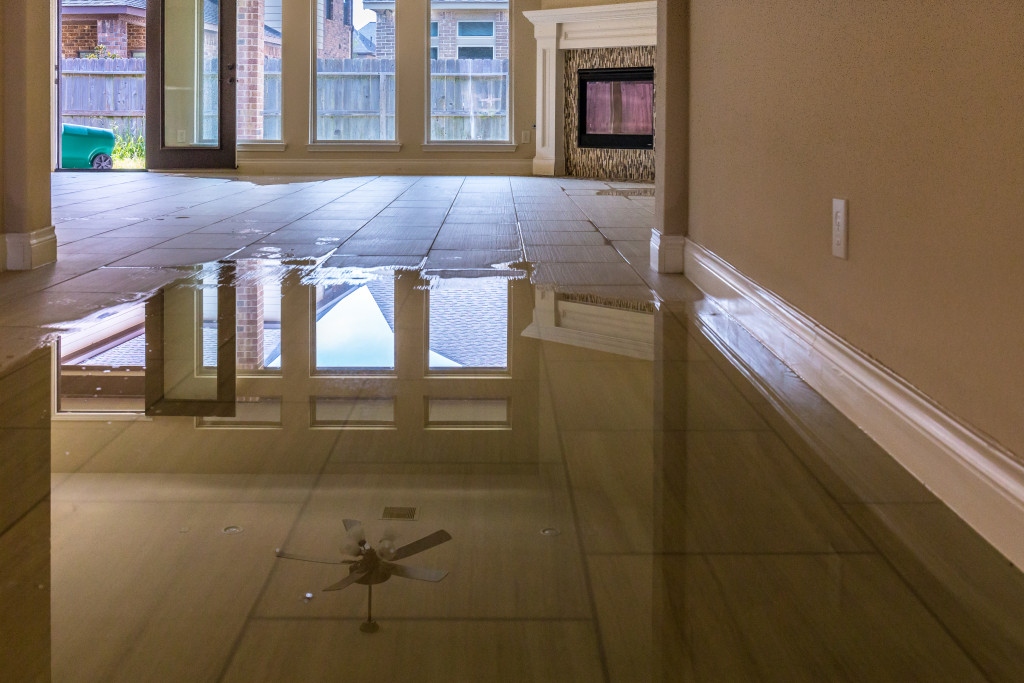- Home water damage can cost between $20,000 to $100,000 in restoration and cause significant health issues.
- Common signs of water damage include unusual smells, peeling paint, wall stains, foundation cracks, and soggy floors.
- Water damage can lead to mold growth and infections from exposure to contaminated water.
- Regularly inspect your roof, plumbing, gutters, and downspouts to prevent water damage; address moisture issues promptly.
- Early detection and prompt repair are vital to manage water damage and prevent further risks effectively.
If you don’t address it early, water damage can wreak havoc on your home. From costly repairs to dangerous health hazards, water damage can lead to several problems that negatively affect your house and health. But how do you identify water damage before it causes severe damage to your home? Here’s what you need to know about water damage today, signs that your home is experiencing it, and how to deal with it.
Water Damage Cost Today
It’s estimated that homeowners with water damage have to pay around $20,000 to $100,000 for water damage restoration. This amount also depends on the type of damage, e.g., flood water, sewage backups, or burst pipes. Moreover, if you don’t address water damage quickly, the costs can increase significantly due to mold growth and structural issues.
Apart from hefty repair costs, water damage can also affect your health in a significant way. Mold growth is one of the most common consequences of water damage, leading to respiratory and other health problems . Exposure to contaminated water can also cause skin irritations, gastrointestinal problems, and even infections.
Signs of Water Damage
Water damage can occur in various forms. Here are some signs of water damage in your home:

1. Unusual Smell
A musty smell in your home is one of the most common and easiest signs of water damage. A musty smell means mold or mildew has started growing and thriving in a damp environment . The musty smell is often found in basements, crawl spaces, and bathrooms, but it can be anywhere in your home where there is moisture. If you smell an unusual odor, addressing it immediately is crucial to prevent mold and mildew growth.
2. Peeling Paint And Wallpaper
Peeling paint and wallpaper are also common signs of water damage. Peeling paint may seem like a minor issue on the surface, but it’s often a sign of a bigger problem underneath. Water can seep into walls, weaken the adhesion of the paint, and cause it to peel. If you notice peeling paint or wallpaper in your home, it’s important to investigate the cause and fix any underlying water-related issues.
3. Stains on Walls and Ceilings
Visible water stains on walls and ceilings clearly indicate water damage in your home. Water stains can range from light yellow to brown, indicating that water has seeped into the drywall or plaster. Water stains can also be a sign of a leaky roof or pipe. If you observe water stains, fixing the root cause and repairing the water damage is essential to prevent further issues.
4. Cracks in The Foundation or Walls
Your home’s foundation is the most critical aspect of the structure. Any damage to your home’s foundation or walls can compromise its structural integrity, leading to additional issues . Cracks in the foundation or walls can be a sign of water damage because excess water causes the soil to expand and contract, leading to shifts in the foundation. These shifts result in visible cracks in the walls and foundation of your home.
5. Soggy Floors and Carpets
Wet or soggy carpets and floors are also a sign of water damage in your home. Water damage can lead to an accumulation of moisture that can manifest in your carpets and floors. If you feel damp or squishy footing when you walk on your carpet, it’s essential to investigate the cause and resolve the issue as soon as possible.
Ways to Deal with Water Damage
Water damage can cause severe issues and should be addressed immediately. Here are some steps you can take to deal with water damage:
Get Your Roof Checked
Your roof is one of the leading causes of water damage in your home. Leaks, missing shingles, and damaged gutters can all contribute to water damage. Therefore, getting your roof inspected regularly by an experienced roof repair contractor is crucial. The contractor can identify and fix any issues before they become significant water damage.

Inspect Your Plumbing
Leaky pipes, clogged drains, and faulty plumbing fixtures can all cause water damage in your home. Therefore, regularly inspecting your plumbing system is essential to prevent potential water damage hazards. If you notice any leaks or problems with your plumbing, it’s essential to get them fixed immediately to avoid any further damage.
Clean Gutters and Downspouts
Clogged gutters and downspouts can lead to water overflowing and seeping into your home. Therefore, cleaning your gutters and downspouts regularly is crucial to prevent water damage. If you notice any clogs or blockages, remove them promptly to ensure proper drainage of rainwater.
Address Any Moisture Issues
If you notice any moisture issues in your home, such as condensation or humidity, address them immediately. Excess moisture can lead to mold growth and other water damage problems. Use dehumidifiers and proper ventilation to control the moisture level in your home.
Water damage is a serious issue that can lead to significant costs and health hazards. It’s essential to be aware of the signs of water damage in your home and take immediate action to prevent further damage. Regular maintenance and inspections can go a long way in preventing water damage, so stay on top of them. Early detection and prompt repairs are key to effectively dealing with water damage.

